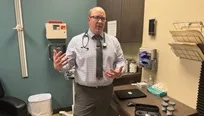During the pandemic, telehealth was seen as a vital tool in making sure people maintained connections with their doctors. For rural areas, this option can help close access gaps. Congress has extended flexibilities for providers who want to keep offering telehealth, but some hope for longer-term regulatory support
BISMARCK, N.D. – As the new year unfolds, rural health providers in North Dakota and other states will continue to have extra latitude in using telehealth technology. But a temporary extension of key rules still leaves uncertainty.
When Congress avoided a government shutdown in late December, it approved a funding resolution that runs through mid-March. And for the next few months, that plan keeps in place relaxed telehealth regulations for people on Medicare that started during the pandemic.
Brad Gibbens of North Dakota’s Center for Rural Health says even though telehealth use has declined since the COVID emergency ended, this option is still useful in remote areas.
He adds because these interactions are timelier, telehealth cuts down on health-care costs by reducing hospital admissions. A number of health organizations want the relaxed rules made permanent, so providers can better plan for them and patients don’t lose continuity. Telehealth access has bipartisan support, but skeptics have voiced concerns about privacy breaches and lower quality of care.
Gibbens stresses that telehealth should not be seen as a replacement for in-person visits. When the situation allows, he says, doctors still prefer having a patient come see them.
However, Gibbens disagrees with assertions that there’s a drop off in the level of care when the visit happens online. He says for patents in areas with very limited provider access or transportation gaps, telehealth is better than no care at all. He adds that broadband investments have helped smaller clinics overcome technology barriers in enhancing online appointments.













